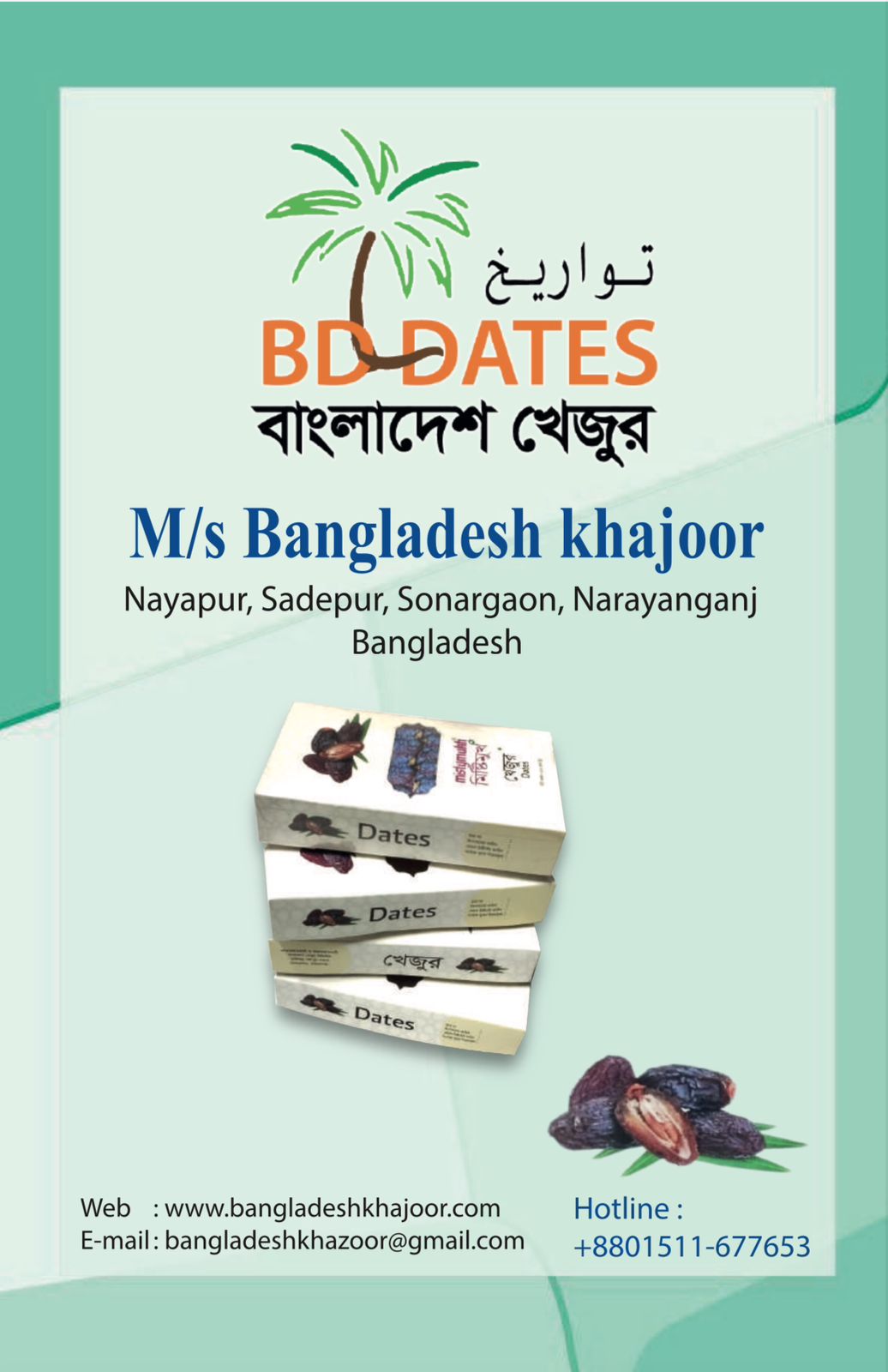Parasitic Infestation in Nandus nandus
Parasitic Infestation in Nandus nandus (Ham.-Buch.)
-A Review with a few Biological Aspects
Dr. Hamida Khanum
Professor, Dept. of Zoology, DU
E.mail. hamida_khanum@yahoo.com
Dr. Sharmin Musa
Professor, Dept. of Zoology, DU
E.mail. sharminsumi@yahoo.com
Md. Rahat Hossain
Dept. of Zoology, DU
E.mail. rahathossaindu1213@gmail.com
Abstract
The commonly known Meni or Bheda fish in Bangladesh, Nandus nandus (Ham.-Buch.), is an important fish-food of high nutritive value in South Asian countries. The natural population of this fish has been declining rapidly due to some parasitic infections, which has escalated due to the lack of scientific management, anthropogenic disturbances, unhabitable water quality, and such related factors. The overall prevalence and intensity of parasitic infestation revealed through different studies were 63.75% (4.53), 71.67% (4.52) and 55% (3.72), recorded recorded till date. But, a relationship between the infestation of parasites and the body length of N. nandus was not found. Those studies had showed that the intestine of the fish was the most susceptible organ and Allocreadium species (73.12 %) was the most abundant parasitic Species.
Introduction
The Gangetic leaffish, Nandus nandus is a fresh and brackish-water bentho-pelagic Species of the family Nandidae. It is distributed throughout the Indian sub-continent including Bangladesh, India, Malaysia, Myanmar, Pakistan, Thailand, and Vietnam (Froese and Pauly 2016). It is very important for its fat but high concentration of protein, lipid, calcium, phosphorus, and other useful elements as human nutrients (Chowdhury 2001). However, unfortunately the natural populations are declining fatally due to reckless fishing, habitat destruction (IUCN Bangladesh 2000) pollution, diseases and other ecological changes to their territory (Hossain et al. 2015c). As a result, this fish is categorized as vulnerable in Bangladesh (IUCN Bangladesh 2000) although globally categorized as least concern (IUCN 2014).
The production and growth of this fish are hampered by various ecological and biological factors and also by diseases and of the factors, helminth parasites play a major role. (Parveen and Sultana 2014). Government statistics show that the per capita fish intake has declined from 12 kg./Annum in 1960 to 6.5 kg./Annum in 1990 indication that fish production could not keep pace with increasing population (Statistical year book of Bangladeh 2010). In N. nandus, parasites infect almost all organs of the host like, gills, skin, fin, intestine, stomach, kidney, and muscles (Hossain 2012). Parasitic infestation is a global thread particularly in the tropics and is therefore an essential area for proper attention to be given by the scientists for sustainable aquaculture production (Chandra 2006). The World Health Organization (2004) has estimated that the number of people currently infected with fish-borne trematodes alone exceeds 18 million, and many more are at risk. According to Parveen and Sultana (2014), the common Species of helminths found in N. nandus of Bangladesh are trematodes (Clinostomum giganticum, C. complanatum and Euclinostomum multicaecum), cestodes (Bothriocephalus species and Senga ophiocephalina), acanthocephalans (Pallisentis nandai, P. ophiocephali and Neoechinorhynchus species) and nematodes (Porrocaecum species, Contracaecum species and Gnathostoma spinigerum). Among ectoparasites, Trichodina species, Chilodonella species, Dactylogyrus species, Ichthyophthirius multifilis and myxosporean spores are found in the gills of N. nandus in winter season (Ahmed et al. 2009).
Methodology
Data was collected through extensive review of literatures from different sources. We used PubMed, Google, Google Scholar, and Research Gate to search relevant information using different keywords. Information from books, other published articles etc. were also used to accumulate data on parasitic infestation in Nandus nandus.
Results
Female individuals of N. nandus showed comparatively higher parasitic infestation than males (Table 1). Prevalence and intensity of parasites do not depend on the different length of N. nandus. Intestine was the most infected internal organ by different parasites followed by body cavity and stomach. The highest prevalence was found for Allocreadium species (73.12 %) in intestine, Clinostomum species (56.25%) in stomach and C. giganticum (22%) in body cavity.
Table 1. Comparartive information of parasitic infestation in N. nandus based on sex.
| Reference | Host sex | No. of host examined | No. of infected host | No. of worms | Prevalence (%) |
Intensity (±) |
| Parveen and Sultana (2014) | Male | 26 | 11 | 38 | 42.31 | 3.45 |
| Female | 50 | 40 | 193 | 74.07 | 4.83 | |
| Total | 76 | 51 | 231 | 63.75 | 4.53 | |
| Hossain (2012) unpublished MS thesis. | Male | 34 | 25 | 105 | 73.53 | 4.2 |
| Female | 26 | 18 | 87 | 69.23 | 4.83 | |
| Total | 60 | 43 | 192 | 71.67 | 4.52 | |
| Parveen et al. (2007) | Male | _ | _ | _ | 41.17 | 4.00 |
| Female | 65.21 | 3.60 | ||||
| Total | 55 | 3.72 |
Table 2. Prevalence and intensity of parasitic infestation in different length groups of host fish Nandus nandus.
| Author/Reference |
Length groups (cm) |
Prevalence (%) |
Intensity (±) |
| Parveen and Sultana (2014) | 5-10 | 50 | 03 |
| 10.1-15.1 | 64.71 | 4.87 | |
| 15.2-20.2 | 69.23 | 3.88 | |
|
Hossain (2012) unpublished MS thesis |
10.2-12.2 | 78.57 | 5.27 |
| 12.3-14.5 | 60 | 3.17 |
Table 3. Prevalence and intensity of parasites in N. nandus based on different organs.
| Author/Reference | Name of parasites |
Body cavity (%) |
Stomach (%) |
Intestine (%) |
|
Parveen and Sultana (2014) |
Clinostomum giganticum | 22 | 0 | 16 |
| Clinostomum complanatum | 2 | 0 | 10 | |
| Euclinostomum multicaecum | 14 | 0 | 4 | |
| Bothriocephalina species | 0 | 0 | 24 | |
| Senga ophiocephalina | 0 | 0 | 14 | |
| Pallisentis nandai | 0 | 1 | 1 | |
| Porrocaecum sp. | 10 | 3 | 0 | |
| Contracaecum sp. | 12 | 32 | 38 | |
| Gnathostoma spinigerum | 03 | 3 | 1 | |
| Pallisentis ophiocephali | 0 | 0 | 1 | |
|
Hossain (2012) unpublished MS thesis |
Allocreadium sp. | 9.68 | 17.20 | 73.12 |
| Clinostomum sp. | 9.37 | 56.25 | 34.37 | |
| Contracaecum sp. | 9.09 | 4.91 | 50 | |
| Porrocaecum sp. | 4 | 56 | 40 | |
| Pallisentis sp. | 0 | 30 | 70 |
Discussion
All the previous studies done in different times by different researchers suggested a high prevalence and intensity of parasitic infestation. This high prevalence may be associated with lack of scientific management, man-made disturbances, water quality deterioration and many other causes (Ahmed et al. 2009). Parveen and Sultana (2014) and Parveen et al. (2007) separated the samples into male and female groups and found significantly higher prevalence in female (74.07% and 65.21%) than in male (42.31% and 41.17%) respectively (Table-1). Similar results were observed by Sultana (2015), Khanum et al. (2008) and Rahman and Saidin (2011). They concluded that this might be due to lower physiological resistance to female fishes rather than the ecological conditions. This is however not in agreement with Hossain (2012) (unpublished MS thesis), who reported higher (73.53%) prevalence in male than in female (69.23%). This may be due to the difference in the source of fish hosts used in the two studies.
Parveen and Sultana (2014) and Hossain (2012) conducted their experiment on parasitic infestation in Nandus nandus based on organelle distribution and found the highest prevalence of parasites (47.19% and 73.33%) respectively (Table 3) in the intestine. Similar results also observed by Sultana (2015) and Khanum et al. (2011). For this experiment, Parveen and Sultana (2014) kept the collected endoparasites in 70% ethyle alcohol but Hossain (2012) kept each organ of the host in 0.75% NaCl solution. In the study of Hossain et al. (2017) samples were instantly chilled in ice on site and preserved with 10% buffered formalin upon arrival in the laboratory. Ahmed et al. (2009) preserved the parasites in Alcohol, Formalin and Acetic Acid for detailed study.
The highest prevalence of parasitic infection in N. nandus was in summer and the lowest in winter recorded from the studies of Parveen and Sultana (2014). Lafferty and Kuris (1999) reported that the factor responsible for this is eutrophication. In contrast, Sultana (2015) and Ahmed et al. (2009) found that the prevalence and intensity was higher in winter than in summer and autumn. This may be due to the sudden fall down of temperature and reduced antibody production in winter (Ahmed et al. 2009). Whereas, Hossain (2012) observed that the higher prevalence was in rainy season than in summer and winter seasons.
Parveen and Sultana (2014) separated the host fishes into three length groups and showed the prevalence in small fishes is less than large fishes and the highest intensity in medium length group and lowest in small length group (Table 2). Hossain (2012) separated the host fishes into four length groups and observed the highest prevalence in intermediate length group. Sultana (2015) and Mofasshalin et al. (2012) found the same result. The present study suggests that in N. nandus, age, sex, length, physiology, season of the year and other environmental factors mainly influence the parasitic infestation.
References:
- Ahmed, G.U., Hossain, M.M., and Hassan, M.M. 2009. Seasonal variation of disease and pathology of a perch, Nandus nandus (Hamilton,1822) from Ox-bow Lake fisheries in Bangladesh. Eco-friendly Agril. J. 2(8): 761-767.
- Chandra, K.J. 2006. Fish Parasitological Studies in Bangladesh: A Review. Agric. Rural Dev. 4(1-2): 9-18.
- Chowdhury, M.B.R. 2001. The occurrence of nematode parasites in Nandid fish. Bangladesh J. Agricult. Sci. 10: 37-42.
- Donald, B. Jyrwa, Thapa, S. and Tandon, V. 2014. Helminth parasite spectrum of edible freshwater fishes and fish-borne zoonoses in Meghalaya, Northeast India. Parasite Dis. 40(2): 312-329.
- Froese, R. and Pauly, D. 2016. World wide web electronic publication. Available at (http://www.fishbase.org).
- Hamilton, F. 1822. Fishes of the Ganges. Archibald constable and company, Edinburgh, pp. 96.
- Hossain, M.I. 2012. Helminth infection in Nandus nandus and Colisa fasciatus. MS thesis, Department of Zoology, University of Dhaka, pp. 54-89.
- Hossain, M.Y. 2014. Threatened fishes of the world: Mystus vittatus (Bloch, 1794) (Siluriformes: Bagridae). J. Fish. 72: 183-185.
- Hossain, M.Y., Hossan, M.A., Khatun, D., Nawer, N., Parvin, F., Rahman, O. and Hossain, A. 2017. Growth, condition, maturity and mortality of the Gangetic Leaffish Nandus nandus (Hamilton, 1822) in the Ganges River (Northwestern Bangladesh). Jordan J. Biol Sci . 10(1): 57-62.
- Hossain, M.Y., Hossan, M.A., Pramanik, M.N.U., Nawer, F., Ahmed, Z.F., Yahya, K., Rahman, M. M., and Ohtomi, J. 2015c. Threatened Fishes of the World Labeo calbasu (Hamilton, 1822) (Cypriniformes: Cyprinidae). J. Fish. 73: 134-136.
- IUCN Bangladesh. 2000. In: Red Book of Threatened fishes of Bangladesh. The World Conservation Union, Dhaka, Bangladesh, pp. xi+116.
- 2014. In: Red List of Threatened Species. Available at (https://www.iucn.org/red-list).
- Kabata, Z. 1985. Parasites and diseases of fish cultured in Tropics. Taylor and Francis Ltd, London, pp. 318.
- Khanum, H., Bugum, N. and Begum, A. 2008. Infestation of helminth parasites in the Panna micrdon ( Bleeker , 1849). Dhaka Univ. J. Biol. Sci. 17(1): 51-57.
- Khanum, H., Bugum, N. and Begum, A. 2011. Seasonal prevalence, intensity and organal distribution of helminth parasites in Macrognathus aculeatus. Dhaka Univ. J. Biol. Sci. 20(2): 117-122.
- Lafferty, K.D. and Kuris, A.M. 1999. How environmental stress affects the impacts of parasites. Oceanogr. 44: 925-931.
- Margolis, L., Esch, G.W., Holme, J.C., Kwis, A.M. and Schad, G.A. 1982. The use of ecological terms in parasitology (Report of an adhoc committee of the American Society of Parasitology). J. Parasitology. 68(1): 131-133.
- Mofasshalin, M.S., Bashar, M.A., Alam, M.M., Alam, G.M., Moumita, D., Mazlan, A.G. and Simon, K.D. Parasites of three Indian minor carps of Rajshahi, Bangladesh. Asian J. Anim. Vet. Adv. 7(7): 613-620.
- Nahida, T.K., Khatun, A. and D’silva, J. 1994. The histopathology of infested organs in Nandus nandus (Hamilton). Ninth Zool. Conf. Bangladesh, pp. 51-54.
















